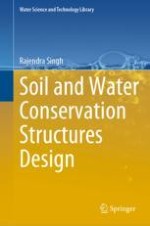2023 | OriginalPaper | Buchkapitel
10. Chute Spillway
verfasst von : Rajendra Singh
Erschienen in: Soil and Water Conservation Structures Design
Verlag: Springer Nature Singapore
Aktivieren Sie unsere intelligente Suche, um passende Fachinhalte oder Patente zu finden.
Wählen Sie Textabschnitte aus um mit Künstlicher Intelligenz passenden Patente zu finden. powered by
Markieren Sie Textabschnitte, um KI-gestützt weitere passende Inhalte zu finden. powered by
